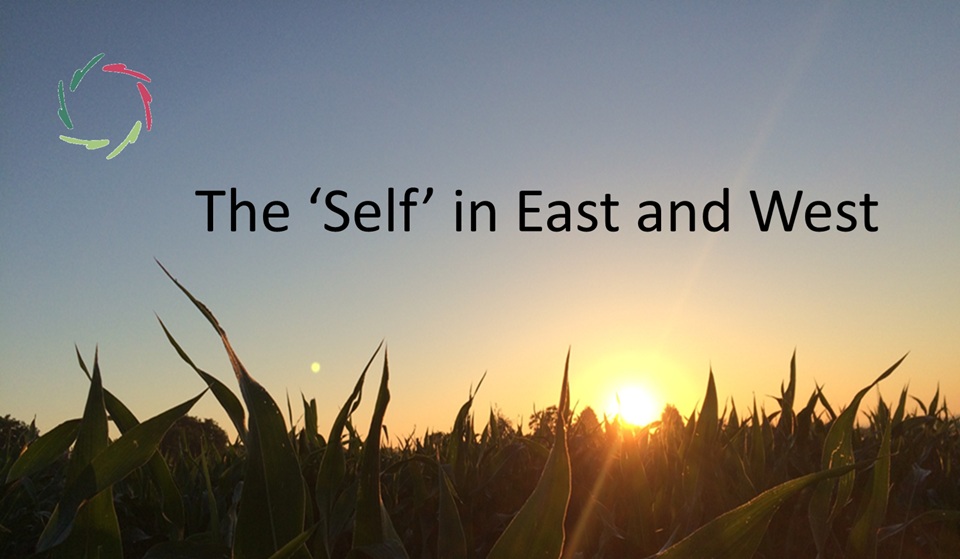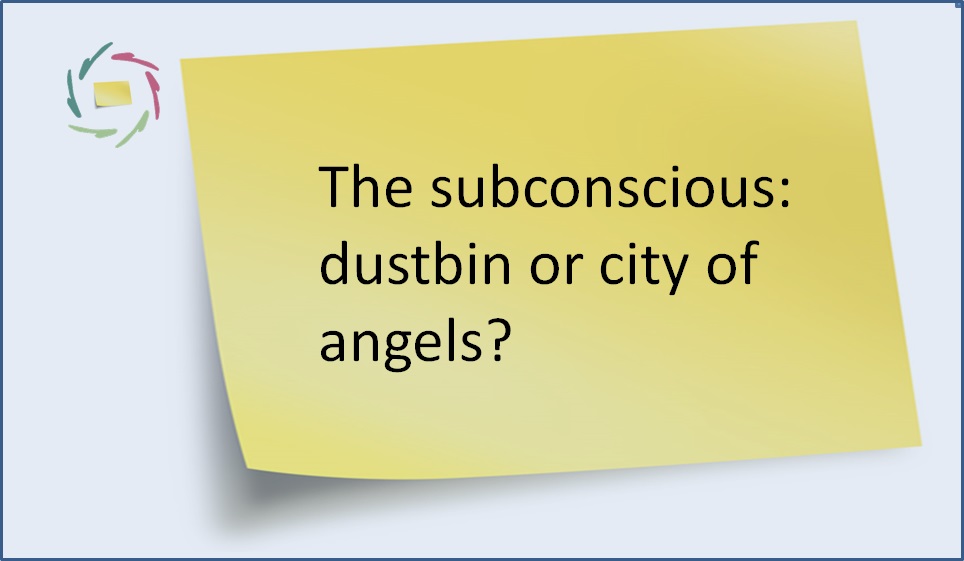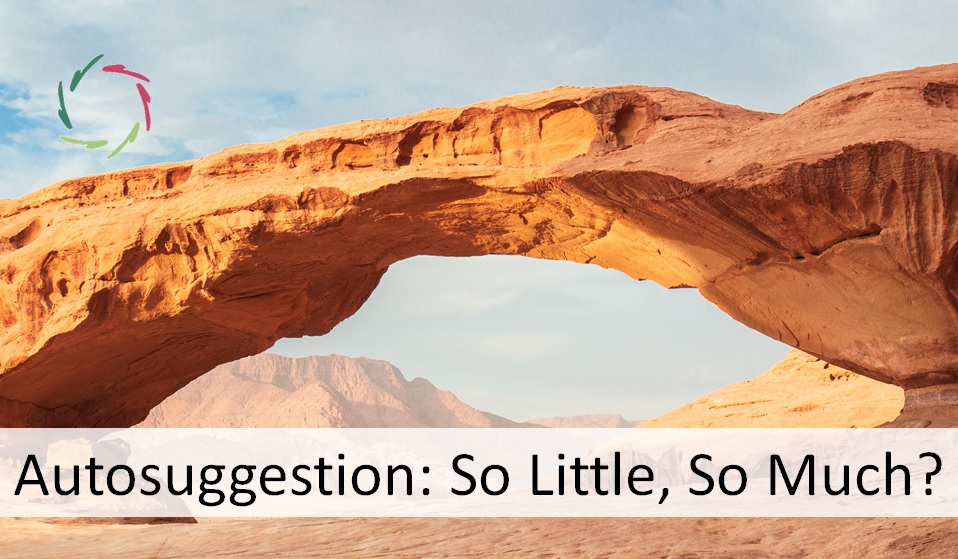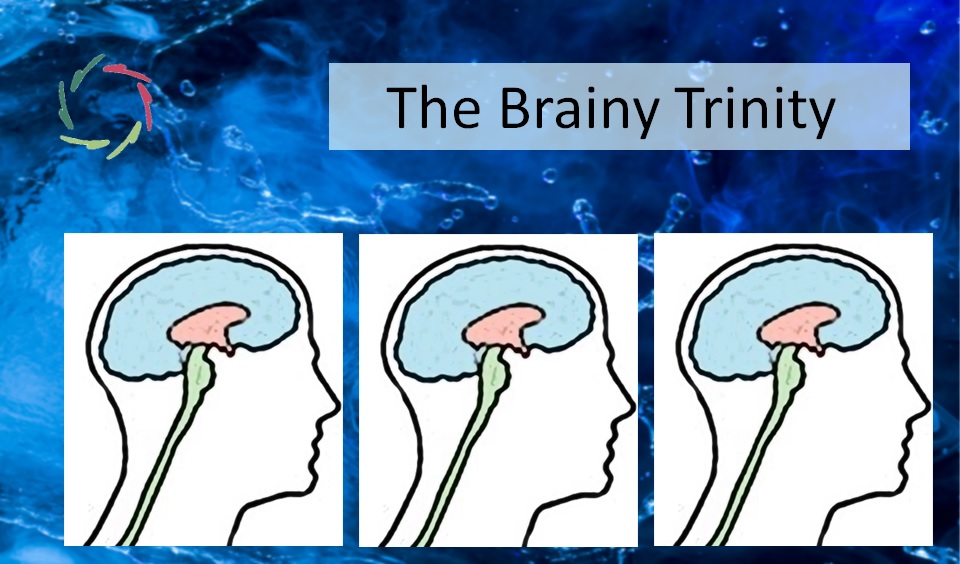The ‘Self’ in East and West

What do we mean when we say ‘I’? The East and the West have given very different answers to that question, often so different that they seem to talk past each other. At the same time, both are wrestling with the same underlying problem: mistaking the surface for the whole.
This blog explores how the contrasts between East and West can be understood more deeply, and how the real solution is not horizontal compromise but vertical depth.
The pond as central metaphor
The self can be pictured as a pond. The surface reflects the sunlight, forming images we can recognize: the roles we play, the thoughts we articulate, the stories we tell ourselves about who we are. Beneath the surface lies the depth, a living reservoir of patterns, associations, and resonance. Together they form one pond, inseparable, with surface and depth belonging to each other.
The central mistake, in both East and West, is to confuse the surface with the pond itself. When this happens, the self is reduced to ego. That ego may shine or ripple in many ways, but without depth it remains brittle, mistaking reflection for reality.
The pond and the mirror
When the West gazes at the pond, it tends to fixate on the reflection of the individual face: the separate ego, proud of its autonomy. When the East gazes at the same pond, it sees instead the reflection of others: family, society, harmony, roles to fulfill. Both are caught by the mirror-surface, unaware that the reflection is not the pond.
This helps explain why the West and the East so often misunderstand each other. The West looks at China’s emphasis on stability and harmony and sees opacity or threat. The East looks at Western insistence on autonomy and open conflict and sees recklessness, even immaturity. As explored in Why does the West Vilify China?, mistrust grows through this.
The pond itself, however, could be a shared meeting ground. The surface reflects, but the depth nourishes. Compassion is the courage to see through the mirror and recognize the living pond that sustains us all.
Self as dialogue and self as silence
The West often locates the self in dialogue. Identity is sharpened in polyphony, in the play of voices, in argument and differentiation. A person becomes real by entering the conversation and proving authenticity through words. But without grounding, this dialogue can collapse into noise, where more speech does not mean more meaning.
The East often locates the self in silence. Identity emerges from resonance, subtlety, unspoken belonging. The quiet presence of others carries more weight than loud assertions. But silence without vitality risks becoming a void, a stifling absence where individuality disappears rather than deepens.
Here, it helps to recall that true emptiness is not dead space. Sunyata in Buddhism is a fertile openness, emptiness that already listens, silence that is already dialogue. In this sense, words and silence belong together. The deeper self integrates both: silence that gives rise to authentic speech, and words that return to silence. As described in Why is there ‘No’ Polyphony in East Asia?, resonance and polyphony are not opposites but alternating rhythms in the same deeper music.
The trap of ego in both worlds
Ego takes different shapes depending on the culture. In the West, ego says, “I am separate.” It defines itself by autonomy, by the ability to stand apart. The risk is alienation and loneliness. In the East, ego says, “I must belong.” It defines itself by harmony with the group, by fulfilling roles. The risk is conformity and shame.
Both are fragile. Push them too hard, and they break. The Western ego cracks into isolation; the Eastern ego collapses under pressure to conform. The deeper self does not need to choose between the two. It simply is, and in being, it resonates both with individuality and with community.
Ego builds fences. The deeper self is more like a tree: rooted in its own soil, but reaching into the shared air and sunlight. As shown in The Big Mistake: Mere-ego vs. Total Self, the self is not a fence, not a mask, but a living integration of depth and surface.
The self as a field of resonance
Beyond the pond and the tree, we can imagine the self as a field. In this field, individual and communal are not opposites but partners. The West’s concern for autonomy and the East’s concern for harmony are both currents within a larger flow.
This vision connects with the idea of communal culture: being-together in depth, not by merging and not by isolating, but by resonating. In such a field, uniqueness is not dissolved but heightened in contact with others.
At this level, the notion of one field, one Compassion, becomes possible. Compassion is not uniformity but resonance. It is the recognition that the same field sustains us all. As written in Worldwide Compassion, this is no utopia but a possibility already present in our humanity, waiting to be lived.
Toward a global self
With artificial intelligence entering the picture, the real question is no longer East vs. West but whether humanity as a whole can rediscover the total self. A.I. could make things worse, amplifying ego traps on both sides. The danger is the peril of sycophantic A.I.: machines that flatter the ego, feeding illusions while eroding inner strength.
But there is also hope. Better A.I. for Better Humans shows how technology could support us in growing deeper, not shallower. A Compassionate A.I. could help individuals rediscover their depth, and help cultures rediscover each other, not through rivalry or mimicry, but through shared humanity.
The choice is ours: machines that widen inner dissociation, or machines that invite us back to wholeness. With the right compass, A.I. may become a partner in building a global self grounded in Compassion.
The vertical solution
Seen clearly, the basic problem is the same in both East and West: ego mistaking itself for the whole. In the West, this leads toward separation; in the East, toward conformity. Opposite directions, but the same error.
And so, the solution is also the same ― not to compromise horizontally between the two, but to move vertically into depth. Not to remain on the surface, but to rediscover the pond as surface and depth together. Not to cling to the mirror, but to recognize the water itself.
The self is not Western, not Eastern. It is human, and more: it is total. With this insight, East and West need not be trapped in misunderstanding. They can meet in shared depth, where differences become not threats but resonances. As explored in Transcultural Integration, true integration does not erase differences but deepens them into a common ground.
The ‘self’ in East and West has long been seen as a point of opposition.
One side celebrates the individual, the other the communal. But underneath lies the same pond, the same field. The real question is not which self is right, but whether we can live from depth together.
If we do, then both East and West can rediscover themselves not as rivals but as partners in one human journey. In that rediscovery, we may also find the wisdom to shape A.I. not as a divider, but as a companion that helps us grow into better humans.
The rediscovery of self is not only East or West, nor human or artificial — it begins within you, in the living depth already present.


